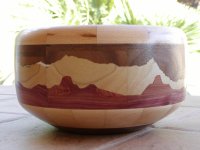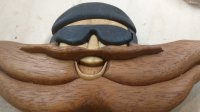Glenn McCarron
PRO Member
For my next proposed segmented project I need to do a feature ring. In that feature ring I would like to do a ring of Maple Leaves. To make my life easier I would like to use Lamination Pro to make the leaf design. ( I am hoping that Lloyd reads this and figures out a way to import a picture and have Lamination Pro spit out the design in mere seconds. In the next few weeks. Just joking.) I will certainly try to do the design myself but I thought I would throw it out there to see if anyone else has tried to do this (or succeeded) or have any suggestions as to how I would do this. I have attached a picture. I do not mind slight changes like the corners being sharp instead of rounded but all the points have to remain. I would think the finished height would be around 2 to 2.5 inches tall.
Any suggestions would be greatly appreciated.

Any suggestions would be greatly appreciated.



